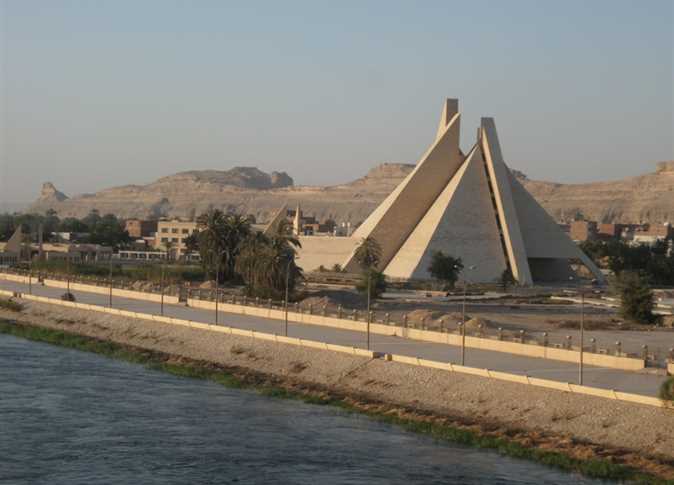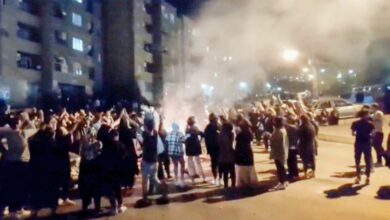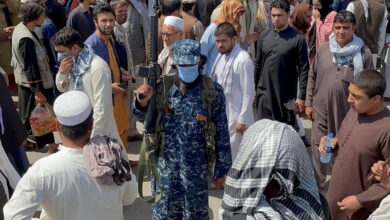Entering the Wireless exhibition in Downtown’s Mashrabia Gallery, visitors find postcards of Cosmic – a silhouetted character developed by Spanish artist Xavier Puigmarti – joining pro-democracy protesters in Tahrir Square. Hanging vertically on the wall, the postcard collection is juxtaposed with another, showing familiar pharaonic tourist attractions and titled “The revolution is not a souvenir.”
Puigmarti followed the first few days of the revolution from Fayoum, where he has lived for over a decade, watching local and international media.
“I was trying to get the news out to friends overseas through Facebook posts. I would call my friends in Tahrir to get newsfeeds and publish them. But then I felt I had to come to Cairo, to participate and experience the revolution first hand,” Puigmarti told Al-Masry Al-Youm.
Social media networks were hailed for their role in building momentum for the revolution. Facebook and Twitter graffiti bedecked the walls of buildings surrounding Tahrir Square and protesters’ signs dubbed Facebook “People’sBook… the Egyptian Social Network.” Yet when the Mubarak regime decided to shut down communication networks on the early hours of 28 January – otherwise known as the Friday of Anger – “the virtual networks created over social media moved into the real world for the first time,” as activist Mona Saif told Al-Masry Al-Youm on 29 February.
But, it’s the human relationships developed on the ground and the exemplary level of tolerance and understanding among protesters that kept the revolution going, and it’s these values that Puigmarti seeks to emphasize with Wireless.
So much has been achieved, explained Puigmarti, but what he insists upon through the exhibition and particularly in “The revolution is not a souvenir,” is that, “There’s no turning back now. We must continue working with revolution as a mindset despite all anxieties over the future.”
Paintings in Wireless vary between humorous representations of telecommunication tools in “SMS triptych”, with note cards hanging off telephone poles like leaves on trees, to the most basic forms of communication like speaking, seeing, listening. In a painting with the famous Qarun Lake in the background, one man stands on an artist’s palette and speaks through a cone to make his voice heard. At the other end of the palette, another man uses a telescope to see more clearly.
“It‘s these basic human attempts at communicating and understanding one another that the exhibition seeks to capture,” Puigmarti explained.
For 18 days the world watched the news from Tahrir, casting aside long-held ideas of Egypt as being of little interest in modern times. Puigmarti addresses these changing stereotypes in his postcard series. He often uses desert landscapes instead of Tahrir Square or other more iconic urban landscapes as a background for his paintings.
Against the desertscapes, humans are abstracted, preventing audience members from delineating their religion or ethnicity. Instead of capitalizing on the romanticized images of Copts protecting Muslims as they pray, or liberal and Islamist groups camping side by side in the square, Puigmarti represents humans in their most basic form, forcing people to rid themselves of any ideological baggage.
Wireless is a tribute to the 25 January revolution. Yet it seeks not to historicize the revolution, but to capture communal values – in this case communication – that Puigmarti believes are central to the revolution’s success.
Wireless is shown at Mashrabia Gallery of Contemporary Art until 5 May 2011
8 Champollion Street, Downtown, Cairo
The gallery is open daily from 11 am to 8 pm, except on Fridays.




